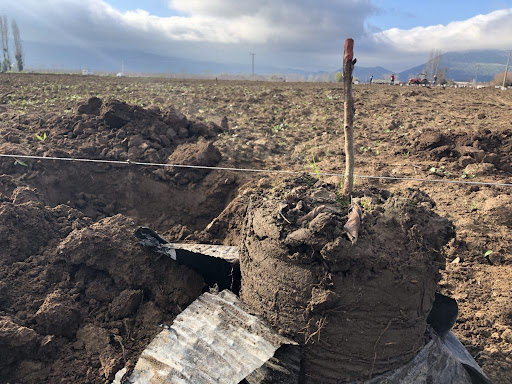Establishment of an orchard, without a doubt, is a stage that, to a great measure or in its entirety, one bets on the productive future of the cherry orchard and that, when analyzing each task in detail, whether it be material or technical, serious mistakes may come into view that at the first glance are not perceived, but surely they will have great impact on its potential.
Productive potential is a term that exerts a predominant value on production of cherries for export, and it should be understood in order to express to the maximum this condition depending upon climatic resources that are present in the area, the plant materials used inasmuch as the variety/rootstock combination, soil type in which the orchard is established, and countless other determining factors that combine and guarantee the long-term success of the business. In this last one, it is the “cornerstone” of the project, we shouldn’t take our eye off the strategic view and visualize it as a “business”, where surely a large part of the producers have it assimilated within a logic of the appropriate use of resources, however, projects are acknowledged that had a good start, or at least it was perceived this way, but as the seasons went by a number of difficulties surfaced in the establishment and design of the orchard.
One of the details to be recurrently analyzed is the vigor/fertility relation. When you have a fertile rootstock with a fertile variety, the cultural practices like pruning and load regulation must be very important in order to promote vegetation and thus sustain the fruit that there is in the points of fruit bearing. When having an undesired condition, a strategy must be enacted in order to not intervene in the plant to placate the development of the rootstock and then be able to achieve fruit production, especially focusing on varieties of less fruit set potential over the high vigor rootstock. In this way the selection of the variety/rootstock is a basic component that allows one to give more opportunities for attractive business.
For self-incompatible varieties (those that need pollination), a good challenge is the choice of pollinating varieties that in many cases do not have blooming synchrony and that produce a limited supply of pollen, but more serious yet, is that there are projects in which the compatibility degree that is achieved in the different cultivars is almost null. For example, when carrying out a plantation project of cv. Regina, one must consider in the first place the varieties that are from the same period of pollination, that is from group V, but also one must consider varieties from the IV group so that there is an overlap of pollen supply in the beginning of Regina blooming. But that is not all, since the choice of pollination varieties must be inside the group of compatibility for that variety in its alleles, this is why it is important to have maximum considerations in this regard.
Experience in Chile in these last years referring to new project designs has primarily been focused on plantation density, inasmuch as having a larger quantity of fruit tree unit centers for available plants in order to produce, that is; if you estimate that for a project you need 450 to 500 thousand shoots/hectare to have an estimated production according to the potential productivity of the orchard, the question to ask ourselves is: Under what circumstances is it more difficult to get this number? In a density of 1,000 to 1,500 plants/hectare? In general that is the focus that we have given to the new projects, in that we must direct our efforts to the maximum from the first year in order to avoid regretting mistakes that many times could mean the end of the project.
Surely there will always be external factors and climatic circumstances that cannot be controlled specifically season to season, but when a project is started it is important to put on the table the main and most important elements that we are able to manage and/or control in an intelligent and profitable way for the good of productive potential of our orchard and our investment.
Some relevant factors of current plantations.
1. Soil preparation.
Physical, chemical and biological preparation. It should be ready by May 1 in order to prepare for the plantation process from June 1 onwards.
2. Plant type and quality
Main factor in the success or failure of the project. It’s estimated that at least 50% of the responsibility of failure of plantation projects is due to poor quality of plant material.
Problems can be associated to the source material (rootstock or grafted variety), development of the plant in the nursery and pathological problems associated to the nursery. However, there is also the option of “all of the above”.
3. Plantation date.
One can begin planting technically when the plants have no leaves, in the winter bear root format. An optimal date to finalize plantation in the central area of Chile is July 31. For the Southern zone it is August 20.
In the case of plants coming from bag or pot culture with active sprouts, the plantation limit date for the central area is November 15 and for the South it is December 1.
4. Irrigation
Up until a few years ago to have irrigation installed and working in the winter wasn’t a great concern. However, over these last years we haven’t had normal/minimum rainfall in order to maintain optimum moisture for the plantations’ soil.
This is the reason that the design and installation times of irrigation should be planned for the beginning of the plantations, since it seems that it will be mandatory to irrigate before and after the plantation process of a new project.










